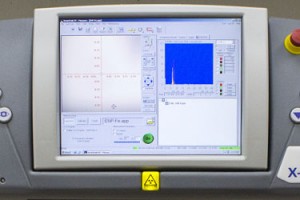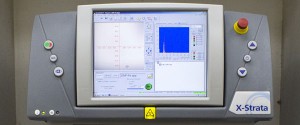
 If you have excellent activation and agitation but you are still having problems, check the electrolyte solution. Keeping the electrolyte clean is crucial to prolonging the life of the electrolyte and creating high quality platting. To check the electrolyte, prepare a two-inch piece of copper. Clean the copper with a fine wire wool until shiny, wash in detergent and water until it passes a water break test. For the water break test simply hold your metal and pour water on it. Hydrophobic contaminants like oil or grease will cause the water to bead up and clump together. If the water falls off in one large sheet, then the metal is free of oily residue and ready to be used in the test. Make sure the tank is ready for electroplating with the proper temperature and agitation. Plate for 20 minutes. If the plating is dull then add a little maintenance brightener and test again. If still dull, then filter the electrolyte through coffee filter paper. You can also “dummy” impurities out of the electrolyte solution by plating at low current using a corrugated steel cathode.
If you have excellent activation and agitation but you are still having problems, check the electrolyte solution. Keeping the electrolyte clean is crucial to prolonging the life of the electrolyte and creating high quality platting. To check the electrolyte, prepare a two-inch piece of copper. Clean the copper with a fine wire wool until shiny, wash in detergent and water until it passes a water break test. For the water break test simply hold your metal and pour water on it. Hydrophobic contaminants like oil or grease will cause the water to bead up and clump together. If the water falls off in one large sheet, then the metal is free of oily residue and ready to be used in the test. Make sure the tank is ready for electroplating with the proper temperature and agitation. Plate for 20 minutes. If the plating is dull then add a little maintenance brightener and test again. If still dull, then filter the electrolyte through coffee filter paper. You can also “dummy” impurities out of the electrolyte solution by plating at low current using a corrugated steel cathode.
If electroplating is causing your parts to crack or to fail in stressful conditions you may have a problem with Hydrogen embrittlement. Hydrogen embrittlement can be caused by electrocleaning, plating, and pickling. This is especially true for high tensile parts. In certain conditions, such when metals are placed in an acidic solution, hydrogen ions can become trapped in the metal matrix. When these hydrogen ions combine into hydrogen gas, they can put pressure on the matrix causing a reduction in ductility and tensile strength. The pressure can even increase the point where the hydrogen gas can crack the metal in a process called hydrogen induced cracking (HIC). You can reduce this problem by mechanically cleaning the item, use heated alkaline cleaners with short immersion times, use clean water, and reduce pickling time. If possible, reduce plating currents and plating times.
If the ambient temperature in your workspace begins to fall, it could begin to affect your electroplating. If so, it might be time to begin heating your plating tanks. Most electroplating can tolerate a fairly wide temperature range but the ideal temperature will between 25-40 degrees centigrade depending on the metal. This can be fixed as simply as placing your tank in a small bowl of hot water or a heating mat. For larger tanks, consider a thermostatic heater.
Contact us at 1-888-257-0880 for more information about how we can help you with your electroplating needs.


